Write your awesome label here.
What is Projection?
Projection is a psychological defense mechanism. It happens when someone avoids facing uncomfortable emotions inside themselves and instead pushes those feelings onto others. It’s unconscious, which is why it can be so tricky to spot when you lack emotional intelligence.
Maybe you’ve seen it show up as aggression, overly harsh criticism, or someone becoming defensive at the slightest comment. The root cause is usually the same: unresolved emotions that the person hasn’t faced yet.
One key point here is that projection is almost always negative. Think about it; people who feel secure and at peace inside rarely feel the need to put others down. But when someone is insecure, jealous, or struggling with low self-esteem, that inner conflict leaks out as judgment, criticism, or hostility. It’s like that overly confident person who deep down feels insecure and puts up a front.
The Many Faces of Hurt
When I talk about the word “hurt”, I’m not only talking about physical pain. Emotional hurt runs much deeper and often hides behind behaviors that look very different on the surface. This can include:
- Insecurity
- Low self-worth
- Envy and jealousy
- Unresolved anger
Think of the person who constantly tells others they’re not good enough. In reality, that’s a mirror of how they feel about themselves. This creates a cycle where unprocessed emotions keep spilling over into interactions, wounding others along the way. It’s a hurt I've definitely seen in myself, and the more aware I am of it, the more I begin to see how prevalent this problem is around the world.
How the Pain Cycle Continues
When someone projects their pain, the person on the receiving end often absorbs it. And when that pain takes root, it can spark a new cycle. The hurt gets passed around from person to person, growing heavier each time. I think of it like an emotional virus, where we can either spread positive emotions, or negative emotions.
That’s why unhealed wounds don’t just stay with the person carrying them, they ripple outward. Without self-awareness and emotional regulation, projection keeps recycling pain instead of resolving it.
Recognizing Projection in Others
One simple way to identify projection is to look for negativity. Online hate comments, personal attacks, and unfair criticism usually have very little to do with you and everything to do with the other person’s internal state.
If someone lashes out or tries to pull you down, chances are they’re projecting their own unhappiness. Their negativity is often a reflection of their own inadequacy. When you reframe it that way, it becomes easier to step back and not take it so personally.
This shift gives you empathy and space. Instead of absorbing their pain, you can recognize it for what it really is: unprocessed emotions searching for an outlet.
Enjoying the Read?
Weekly Mindset Newsletter
Get personal stories, decision-making strategies, and mental frameworks to help you stop overthinking, build self awareness, and live with more clarity.
Thank you!
Recognizing Projection in Yourself
I’ve caught myself projecting many times. For example, when I felt envious of someone else’s success, I would downplay it by saying they just got lucky. It took me years to understand that this was just my own insecurity speaking, not necessarily the truth about them.
Another common form of projection is defensiveness. If you’re secure in yourself, you don’t need to jump into overly defensive mode at every comment. But when something touches an insecurity, the ego reacts quickly. That defensiveness is a sign to pause and look inward.
For me, self-awareness has been the most powerful tool. Whenever I catch myself criticizing others, I now ask myself: why am I saying this? What part of me feels unsettled or insecure? That reflection helps me uncover where the projection is really coming from.
Breaking the Cycle
The key to stopping projection is creating space between your emotions and your actions. Mindfulness plays a huge role here. When you feel the urge to lash out, criticize, or defend yourself, pause and ask: am I upset with them, or am I upset with myself?
That single question has changed the way I respond in difficult moments. Instead of being reactive, I look inward to find the root of my feelings. From there, I can choose a healthier response instead of passing my pain onto others.
Doing the inner work is essential. This can look like therapy, coaching, journaling, or simply practicing deeper self-reflection. The goal is to identify unresolved pain and slowly heal it, so you no longer need to project it onto others.
Choosing Awareness and Healing
At the end of the day, whether you’re the one projecting or on the receiving end, the solution comes back to self-awareness and emotional intelligence. Projection is just pain looking for a way out.
When you realize that, you can stop carrying other people’s pain as your own, and you can stop spreading your own pain to those around you. By healing yourself, you help to break the cycle so that hurt doesn’t keep multiplying.
I have to always remind myself that projection isn’t truth, it’s just unhealed emotion showing up on the surface. When you can view it from this perspective, you create space for compassion, for yourself and to those around you.
So if you ever catch yourself being critical, defensive, or tempted to put someone down, pause and ask what’s really going on inside. And if someone lashes out at you, remember, it’s not about you, it’s about them.
The more you build self-awareness, the more you reclaim your peace. And in doing so, you help to break the cycle of hurt people hurting people.
Sincerely,
Dexter Lam

Do you want to level up and change your life Trajectory?
We're launching our course on Emotional Intelligence
Thank you!

